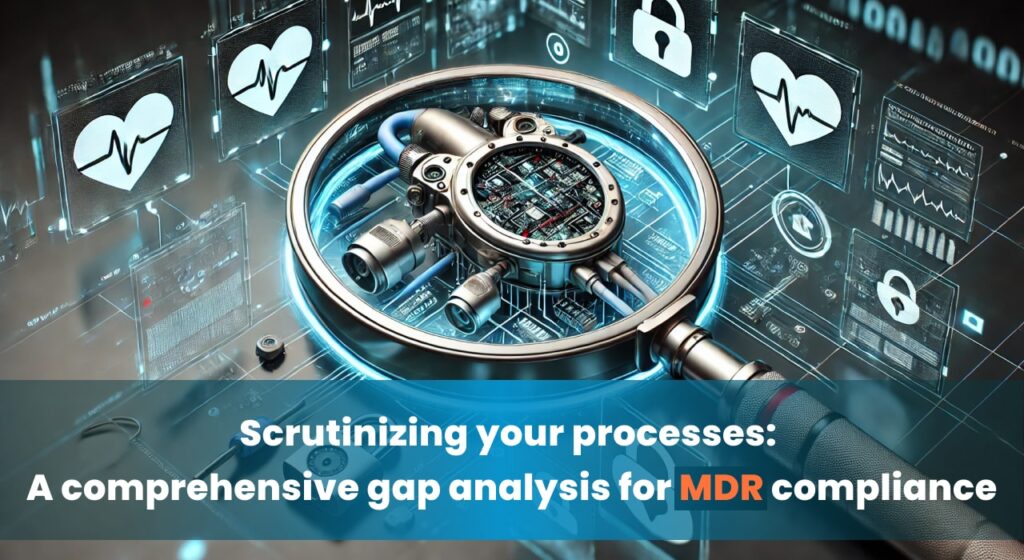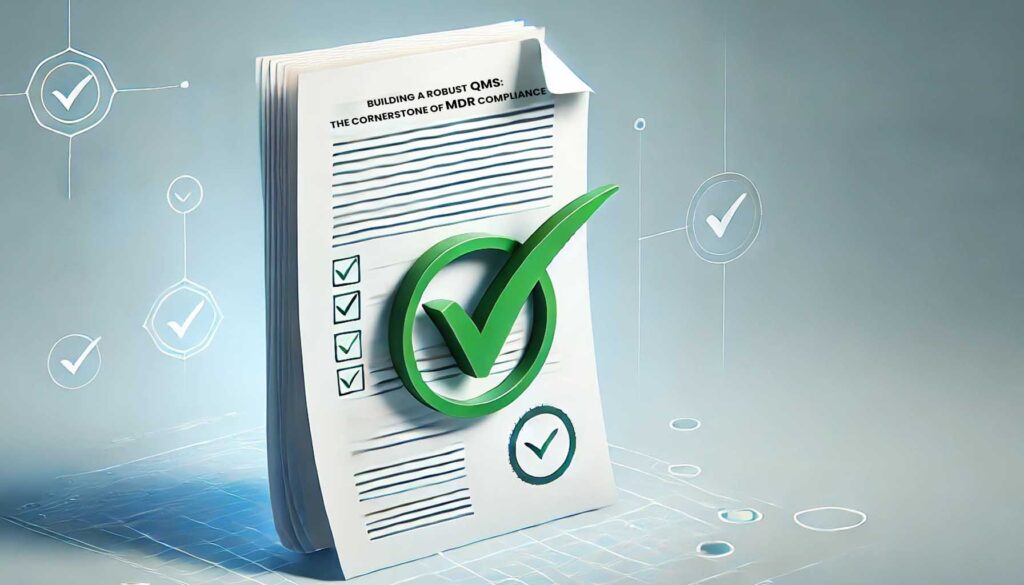
The Medical Devices Regulation (MDR), implemented in the European Union (EU) in 2017, significantly impacts Australian organisations involved in the medical device industry. This regulation establishes stricter requirements for the safety, quality, and performance of medical devices placed on the European market. Since the EU represents a major global market for medical devices, compliance with the MDR is crucial for Australian organisations seeking to maintain or expand their European footprint.
The importance of the MDR is underscored by the critical role medical devices play in modern healthcare. A 2020 report by the Australian Institute of Health and Welfare revealed that over 1.2 million medical devices were reimbursed through the Medicare Benefits Schedule (MBS) system alone. These devices play a vital role in diagnosis, treatment, and patient monitoring. However, a faulty or non-compliant device can have devastating consequences. For instance, a recent incident involving faulty breast implants in Europe resulted in over 10,000 women experiencing severe health complications. The MDR aims to prevent such occurrences by strengthening regulatory oversight and ensuring only safe and effective devices reach patients.
Effective implementation of the MDR offers a multitude of benefits for Australian organisations. Firstly, it fosters a culture of patient safety by driving a more rigorous approach to device design, testing, and ongoing monitoring. Secondly, MDR compliance facilitates continued market access within the lucrative European market. Finally, robust MDR implementation enhances brand reputation and fosters trust among healthcare professionals and patients alike.
This guide serves as a comprehensive roadmap for navigating MDR implementation within your organisation. We will delve into key areas such as leadership, gap analysis, quality management systems, clinical evaluation, and technical documentation. By following these best practices, you can ensure a smooth transition and ongoing compliance with the MDR, ultimately contributing to a safer and more effective healthcare landscape.
Planning and Leadership

Successful implementation of the MDR hinges on unwavering commitment from senior management. Their active buy-in ensures the necessary resources, personnel, and decision-making authority are readily available throughout the process. Without this leadership support, the MDR implementation journey can be fraught with delays, inconsistencies, and ultimately, non-compliance.
To spearhead this critical initiative, establishing a dedicated MDR implementation team is paramount. This cross-functional team should comprise representatives from various departments with expertise relevant to the MDR’s diverse requirements. The table below outlines potential team members and their corresponding roles:
| Department | Team Member | Role |
|---|---|---|
| Quality Management | Quality Manager | Leads overall implementation efforts, oversees gap analysis, and ensures QMS alignment with MDR. |
| Regulatory Affairs | Regulatory Affairs Specialist | Manages communication with regulatory bodies, facilitates understanding of MDR requirements, and prepares regulatory documentation. |
| Clinical | Clinical Research Lead | Oversees clinical evaluation activities, develops and maintains the Clinical Evaluation Plan (CEP). |
| Engineering | Design Engineer | Reviews and updates technical documentation to comply with MDR standards. |
| Training & Development | Training Specialist | Develops and delivers MDR training programs for all relevant personnel. |
This team structure fosters collaboration and ensures all aspects of the MDR are addressed effectively. To translate strategy into action, a comprehensive implementation plan is crucial. This plan should clearly define timelines for each key activity, identify resource allocation for different tasks, and establish clear milestones for measuring progress. Regular reviews and updates to the plan are essential to adapt to evolving circumstances and ensure the project remains on track. By establishing a dedicated team, equipped with a well-defined plan, your organisation can navigate the complexities of MDR implementation with focus and efficiency.
Gap Analysis and Risk Assessment

Building a bridge between your existing practices and the MDR’s stringent requirements begins with a comprehensive gap analysis. This systematic evaluation pinpoints discrepancies between your current processes and the new regulatory landscape. By identifying these gaps, you can prioritise areas for improvement and ensure a smooth transition towards MDR compliance.
Performing a gap analysis involves meticulously comparing your existing quality management system (QMS) documentation and procedures against the specific clauses of the MDR. Particular attention should be paid to areas like risk management, clinical evaluation, and technical documentation, where the MDR introduces significant enhancements. Through this analysis, you’ll gain a clear understanding of where your practices align with the regulations and highlight areas requiring adjustments.
Once the gaps are identified, utilising a recognised risk assessment framework becomes crucial. A well-established framework, such as ISO 14971 for Risk Management in Medical Devices, provides a structured approach to evaluating the potential risks associated with these gaps. By applying this framework, you can prioritise the identified gaps based on the severity of the associated risks. This risk-based approach ensures you focus your initial efforts on addressing the most critical areas, fostering a more efficient and effective implementation process.
The importance of a robust risk management plan extends beyond the initial MDR implementation phase. This plan serves as a living document, continuously evolving to reflect ongoing risk assessments and changing circumstances. By integrating risk management into your daily operations, you can proactively identify and address potential issues before they escalate into non-compliance or patient safety concerns. A well-maintained risk management plan demonstrates your proactive commitment to ongoing MDR compliance and patient safety. In essence, the gap analysis acts as a roadmap, while the risk assessment framework prioritizes the journey, and the risk management plan ensures you reach your MDR compliance destination safely and efficiently.
Quality Management System (QMS)

The Medical Devices Regulation (MDR) places significant emphasis on a robust Quality Management System (QMS) as the cornerstone of ongoing compliance. A well-established QMS serves as a documented framework outlining the processes and procedures that govern the design, development, production, distribution, and servicing of medical devices. By ensuring your QMS aligns with the MDR’s requirements, you can demonstrate a systematic approach to maintaining the quality, safety, and performance of your devices throughout their lifecycle.
The MDR introduces stricter demands compared to its predecessor, the Medical Devices Directive (MDD). To bridge this gap, a thorough review and potential update of your existing QMS procedures are essential. This may involve revising risk management processes to comply with the heightened focus on risk analysis under the MDR (refer to Annex I, General Safety and Performance Requirements of the MDR). Additionally, procedures for clinical evaluation and post-market surveillance (PMS) may require adjustments to meet the MDR’s enhanced requirements for data collection and analysis. In some cases, entirely new procedures may need to be developed to address specific aspects of the MDR, such as Unique Device Identification (UDI) implementation (refer to Annex VI of the MDR).
Key Elements of a QMS for MDR Compliance
- Risk Management: Defines the process for identifying, assessing, and mitigating risks associated with medical devices.
- Design and Development: Outlines the procedures for product planning, design control, and verification and validation activities.
- Production and Quality Control: Establishes processes for production planning, control of production processes, and product inspection and testing.
- Non-Conforming Products: Defines procedures for identifying, managing, and correcting non-conforming products.
- Corrective Action and Preventive Action (CAPA): Establishes a systematic approach for identifying, investigating, and addressing non-conformities and potential issues.
- Document Control: Defines procedures for creating, approving, distributing, maintaining, and controlling all QMS documents.
- Training: Ensures personnel receive adequate training on the QMS, MDR requirements, and their specific roles and responsibilities.
- Audits: Defines the process for conducting internal audits to assess the effectiveness of the QMS.
Effective document control is paramount within the QMS. This ensures all procedures and documents are up-to-date, readily accessible, and consistently followed by personnel. Furthermore, a comprehensive training program equips your team with the necessary knowledge and skills to implement the QMS effectively. Regular training on the MDR’s requirements fosters a culture of compliance within your organisation.
The MDR itself highlights the importance of a robust QMS in Article 10 (Quality Management Systems and Person Responsible for Regulatory Compliance). By adhering to these principles and continuously improving your QMS, you can demonstrate a proactive approach to maintaining compliance and fostering a culture of quality within your organisation. Remember, a well-functioning QMS is not a static document, but a dynamic system that adapts and evolves alongside your organisation’s practices and the ever-changing regulatory landscape.
Clinical Evaluation and Post-Market Surveillance (PMS)
The MDR ushers in a new era of heightened focus on clinical evaluation for medical devices. This shift signifies the regulatory body’s commitment to ensuring devices are demonstrably safe and offer the intended clinical benefits throughout their lifecycle. Gone are the days of relying solely on historical data or data from similar devices. The MDR demands a robust clinical evaluation plan (CEP) that meticulously gathers and evaluates clinical evidence to support the device’s safety and performance claims.
Developing a comprehensive CEP is paramount for navigating this new landscape. This plan outlines the strategy for collecting and analysing clinical data to demonstrate the device’s clinical benefit and risk-benefit profile. A well-structured CEP typically includes the following key elements:
| Element | Description |
|---|---|
| Intended Purpose of the Device | Clearly defines the intended use of the device and the target patient population. |
| Clinical Questions | Outlines the specific questions the clinical evaluation aims to answer regarding the device's safety and performance. |
| Data Sources | Identifies the planned sources of clinical data, such as clinical investigations, literature reviews, and registries. |
| Data Analysis Plan | Defines the methodology for analysing and interpreting the collected clinical data. |
| Risk Management Plan | Integrates risk management considerations throughout the clinical evaluation process. |
| CEP Update Plan | Establishes a process for updating the CEP as new data becomes available. |
By meticulously addressing these elements, your CEP demonstrates a systematic approach to clinical evaluation, fostering trust with regulatory bodies and healthcare professionals. Furthermore, maintaining comprehensive clinical data is crucial. This data serves as the foundation for your clinical evaluation and provides ongoing insights into the device’s real-world performance. The MDR emphasizes the importance of utilising diverse data sources, including clinical investigations, post-market surveillance activities, and scientific literature.
Moving beyond the initial clinical evaluation, post-market surveillance (PMS) emerges as a critical pillar of ongoing compliance. PMS refers to the systematic collection and analysis of real-world data on the device’s performance and safety once it is commercially available. This data provides invaluable insights into potential issues that may not have been identified during pre-market evaluation. By actively monitoring device performance through PMS, you can proactively identify and address any emerging safety concerns.
The MDR mandates establishing and maintaining a robust PMS plan. This plan outlines the processes for collecting, analysing, and evaluating post-market data, including procedures for handling adverse events and implementing corrective actions if necessary. A well-defined PMS plan demonstrates your commitment to patient safety and continuous improvement of your medical devices. In essence, the CEP paves the way for market access, while the PMS plan ensures you stay on the right track throughout the device’s lifecycle.
Training and Communication
Ensuring a successful MDR implementation hinges on a well-informed workforce. Comprehensive training programs for all personnel involved in the medical device lifecycle are crucial. These programs should equip employees with a thorough understanding of the MDR’s requirements and their specific roles in achieving compliance. Effective communication channels are equally important. Regular updates on MDR implementation progress, potential challenges, and successes foster a sense of ownership and engagement amongst all personnel. By fostering a culture of awareness and open communication, you empower your team to actively contribute to a compliant and successful MDR journey.
This guide has equipped you with a roadmap for navigating the complexities of MDR implementation. By establishing strong leadership, conducting a thorough gap analysis, and fortifying your QMS, you can lay a solid foundation for compliance. Developing a robust CEP and PMS plan demonstrates your commitment to ongoing clinical evaluation and real-world device performance monitoring. Finally, meticulous technical documentation and effective communication ensure transparency and a well-informed workforce.
Effective MDR implementation transcends mere regulatory compliance; it fosters a culture of patient safety within your organisation. By adhering to these best practices, you not only gain access to the lucrative European market but also contribute to a safer healthcare landscape for patients worldwide. Remember, a successful MDR journey is an ongoing process, requiring continuous improvement and adaptation. This guide serves as a springboard, empowering you to embark on this essential journey with confidence.
